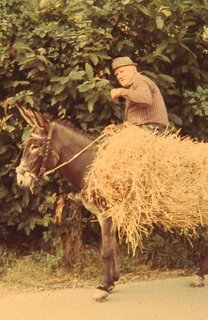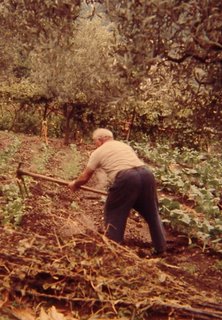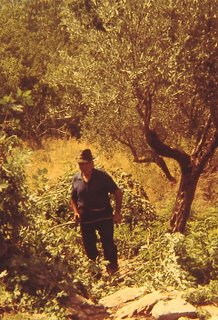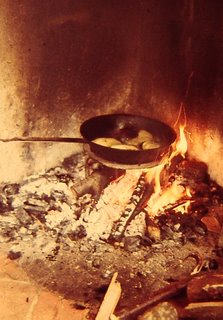At first glance, it appeared to be just an orchard of ancient olive trees. We arrived on a day when there had been a lot of rain. The soil was soaked, the sky was muted, the trees glistened from the saturation. We drove around and I took several pictures. My friend and host, Paolo, told me about one of his Scandinavian importers, who whenever he visited the winery, asked to be brought to this place and left alone for several hours. This orchard was planted at the beginning of the Renaissance, when much of Italy was flourishing in the arts, architecture and music, resulting in scores of works of art. Here in Calabria, the Renaissance left less of an imprint. But nature would see to it that Calabria wouldn’t be ignored.
These trees, a family of hundreds, planted on this escarpment overlooking the Ionian, never to leave, never to see the wonders of Florence, Venice or the Vatican. Left out in the sun, the wind, the heat, the cold, the snow, the silence.
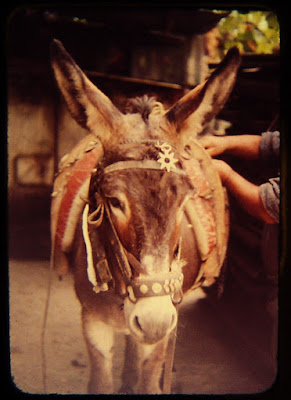
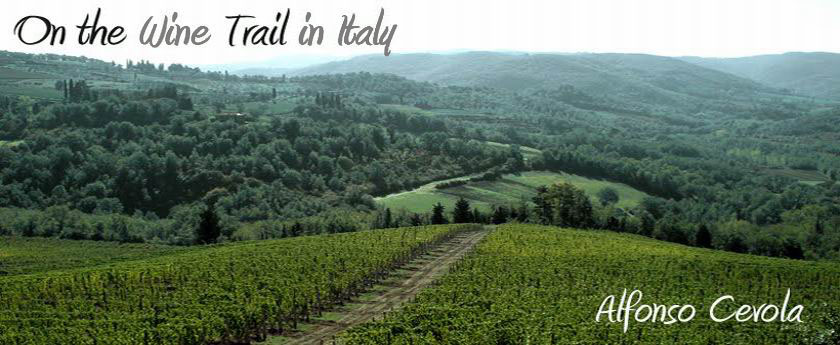











 There has been discussion in Italy about the
There has been discussion in Italy about the  Can Cabernet help bring wealth and fame to Calabria? Who knows? When a wine like a Ciro or any number of wines from Calabria tries to make it in America, it is a combination of energies. When the
Can Cabernet help bring wealth and fame to Calabria? Who knows? When a wine like a Ciro or any number of wines from Calabria tries to make it in America, it is a combination of energies. When the  But the wine that really was the one that turned the light on for me had been put up in a used beer bottle with a crown cap. It was in the wine cellar of my family, the one at the top of this post. My cousins brought me down in the evening after the meal, when the children had been put to bed and the women upstairs were busy (always) making something. We’d go into the cellar and empty bottles so they’d have them for the new vintage. They were not wealthy, but there was a lack of raw materials, so nothing was ever wasted. They weren’t poor. They had a washer and a dryer. Back home in those days, we didn’t. And they had a better car than I had. And a TV. We didn’t have TV because we didn’t want one. But the cars were old 1962’s, a Corvair and Falcon wagon. So to me my cousins were doing well. They just didn’t have enough bottles.
But the wine that really was the one that turned the light on for me had been put up in a used beer bottle with a crown cap. It was in the wine cellar of my family, the one at the top of this post. My cousins brought me down in the evening after the meal, when the children had been put to bed and the women upstairs were busy (always) making something. We’d go into the cellar and empty bottles so they’d have them for the new vintage. They were not wealthy, but there was a lack of raw materials, so nothing was ever wasted. They weren’t poor. They had a washer and a dryer. Back home in those days, we didn’t. And they had a better car than I had. And a TV. We didn’t have TV because we didn’t want one. But the cars were old 1962’s, a Corvair and Falcon wagon. So to me my cousins were doing well. They just didn’t have enough bottles. I loved how they accepted me. All too often everyone is too darn busy or angry to give a damn about anyone except for themselves. But in 1977 things were different. Things were slower. Not as many people lived in their own little reality bubble. No phones, no email, no blog rage, no tweet-spies. Just the sun in the morning, a day of work, two meals, a nap in the afternoon and in the evening after the last meal and the occasional passeggiata, a venture into the wine cellar. And here we were.
I loved how they accepted me. All too often everyone is too darn busy or angry to give a damn about anyone except for themselves. But in 1977 things were different. Things were slower. Not as many people lived in their own little reality bubble. No phones, no email, no blog rage, no tweet-spies. Just the sun in the morning, a day of work, two meals, a nap in the afternoon and in the evening after the last meal and the occasional passeggiata, a venture into the wine cellar. And here we were. The taste: was a wisp of fruit, not enough acid to matter, but nothing awkward or out of balance. This was a wine pure and natural as it had been made for hundreds, if not thousands of years. It connected me to all of the people that had come before and made me feel like finally I had been born to something that I was meant to do, something I loved. It was my entrance interview that the god of wine had arranged with my cousins. It was test and celebration, certification and baptism all rolled up in one. It was the choice that was being given to me for a vocation of a lifetime.
The taste: was a wisp of fruit, not enough acid to matter, but nothing awkward or out of balance. This was a wine pure and natural as it had been made for hundreds, if not thousands of years. It connected me to all of the people that had come before and made me feel like finally I had been born to something that I was meant to do, something I loved. It was my entrance interview that the god of wine had arranged with my cousins. It was test and celebration, certification and baptism all rolled up in one. It was the choice that was being given to me for a vocation of a lifetime.

 Not to dwell in the past, especially one which, one might argue, has little significance for the new generation, folks from 14-30. There were barely paved roads, or toilets. Nano I-pods? Bluetooth? How about a toothbrush? No, it was like it happened a million years ago, to the inheritors of the future.
Not to dwell in the past, especially one which, one might argue, has little significance for the new generation, folks from 14-30. There were barely paved roads, or toilets. Nano I-pods? Bluetooth? How about a toothbrush? No, it was like it happened a million years ago, to the inheritors of the future. Wines in those times. Now we see them nostalgically, their wild yeasts and oxidation-rich profiles, and we’re not talking micro-oxidation either. A shame, because we talk about the heritage of great wine from Italy, but is there really much to ponder on before 1945, when the world experienced a change on such a level that in the Olden Times it would have been called Biblical? We sexy it up and call it “quantum change” as if the atomic age affected winemaking. Which it did, if not directly.
Wines in those times. Now we see them nostalgically, their wild yeasts and oxidation-rich profiles, and we’re not talking micro-oxidation either. A shame, because we talk about the heritage of great wine from Italy, but is there really much to ponder on before 1945, when the world experienced a change on such a level that in the Olden Times it would have been called Biblical? We sexy it up and call it “quantum change” as if the atomic age affected winemaking. Which it did, if not directly. The linear acceleration of agricultural progress hasn’t been without its casualties though. The story teller, the master and the apprentice, the craft of the wine business, all this has morphed into some 15 minute superconducting version, where, in their place, now, young sommeliers walk on water in restaurants across the planet. I was there too, man. We have all been there before.
The linear acceleration of agricultural progress hasn’t been without its casualties though. The story teller, the master and the apprentice, the craft of the wine business, all this has morphed into some 15 minute superconducting version, where, in their place, now, young sommeliers walk on water in restaurants across the planet. I was there too, man. We have all been there before. Maybe I should get out my
Maybe I should get out my  When it comes to Italy, one can actually do this quite easily. Calabria or Liguria would be a great place to start looking for those core experiences in the Italian landscape.
When it comes to Italy, one can actually do this quite easily. Calabria or Liguria would be a great place to start looking for those core experiences in the Italian landscape. I’ve found the Italian of our imagination and our dreams can be a better substitute Italy than the reality on the ground now or 93 years ago.
I’ve found the Italian of our imagination and our dreams can be a better substitute Italy than the reality on the ground now or 93 years ago.
 The road though the Cilento National Park hooked me. I want to linger. Forests, greenery, cool, peaceful. It is the kind of experience one can only hope to have in Italy, or anywhere. But the coast is calling, as is Calabria. We will have to touch the sand when we get there. The trail goes straight through the
The road though the Cilento National Park hooked me. I want to linger. Forests, greenery, cool, peaceful. It is the kind of experience one can only hope to have in Italy, or anywhere. But the coast is calling, as is Calabria. We will have to touch the sand when we get there. The trail goes straight through the 












